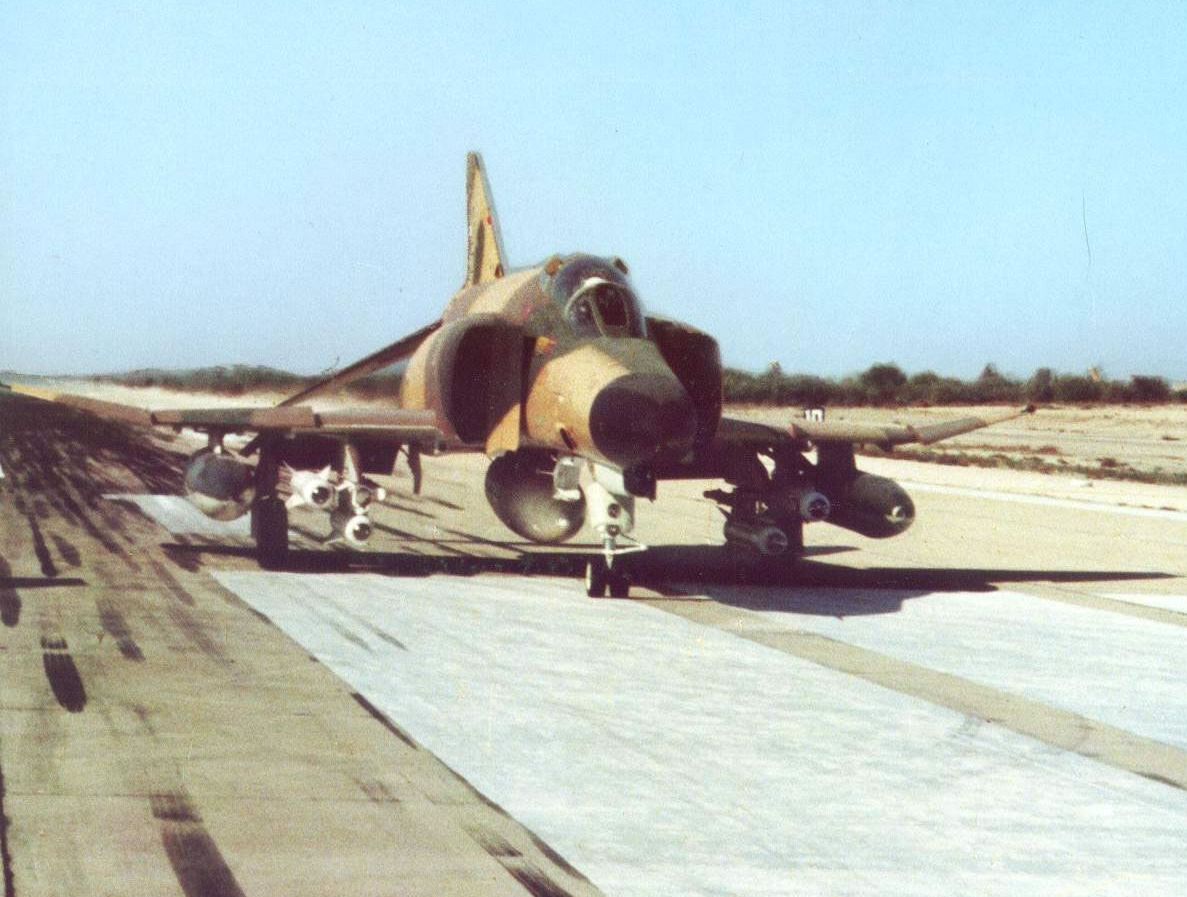Kindly note that the version printed below has been edited from the original version published in the Atlantic Council. In addition, excepting one image (and accompanying caption) all other images and accompanying captions do not appear in the original Atlantic Council publication.
=================================================================
When historians speak of the Miracle of the Marne, a strategic victory for the Allies during World War I, they often remind their audience that one does not expect exhausted armies to assume offensive operations after days of retreat and defeat. In the case of the Iranian armed forces, commonly known as the Artesh, one must speak of months of prosecution, summary executions, and an almost complete breakdown of the chain of command following the 1979 Islamic revolution. Yet, despite all odds, the Artesh chose to fight bravely when the Iraqi army invaded Iran on September 20, 1980.
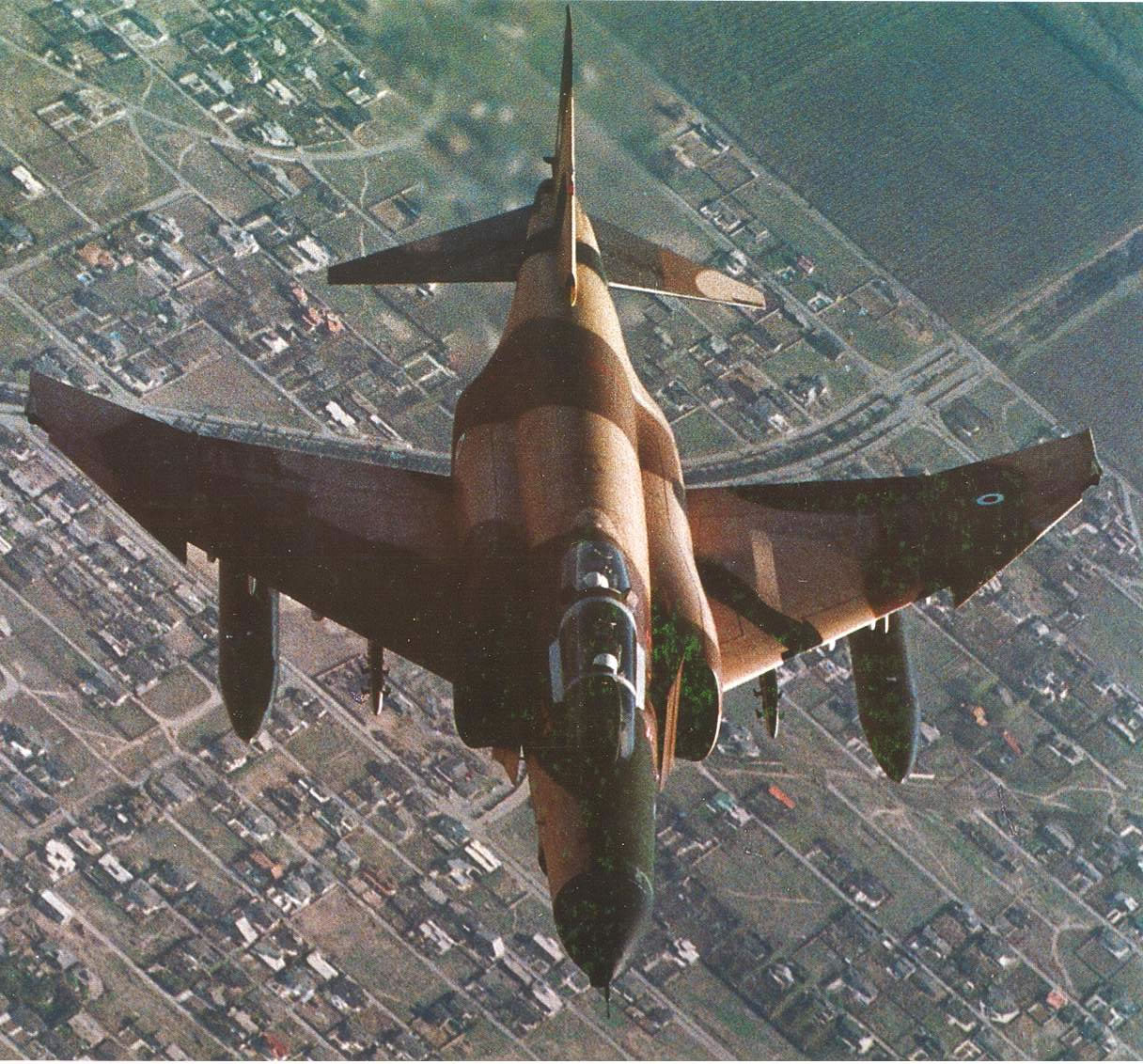
Iranian Air Force Phantom II on patrol over the skies of northern Iran (Source: IIAF). Specifications for McDonnell Douglas F-4 Phantom II are as follows: (a) Aircraft type: multi-role fighter (b) combat radius: 786 miles (c) Operational ceiling: 62000 feet (d) Maximum velocity: 1585 mph (e) Power plant: two General Electric J79-GE-17A turbojets rated at 11810 lbs thrust each dry; 17900 with afterburner. The standard weaponry of the Phantom II are as follows: (a) one M61 20mm cannon w/ 640 rounds (b) maximum ordnance 16000 lbs, including bombs, missiles, AIM-7 Sparrow, AIM-9 Sidewinder, Maverick (air to ground missile system) and AAMs.
The eight-year bloody Iran-Iraq war (1980-1988) stands out as the longest conventional military conflict in the twentieth century. By its end, the conflict had killed or wounded more than one million people on both sides. After almost four decades, there is an increasing debate in Iran regarding the role of the professionally trained Artesh compared to the then newly established Islamic Revolutionary Guard Corps (IRGC), which was comprised of poorly trained volunteers. In this context, commanders of the Artesh are increasingly pushing back against a previous narrative, which largely misrepresented and discounted the critical role of the Artesh in repelling the Iraqi attack.
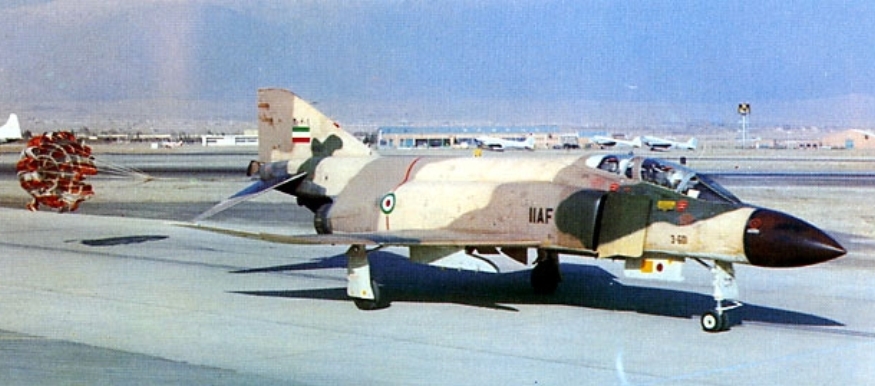
Iranian air force F-4E lands with its brake chute at Mehrabad airport in the mid-late 1970s (Source: Public Domain).
The Iraqi invasion began in the backdrop of the massive purges of the “loyalist” Iranian military after the revolution. Iran’s new rulers had an overall distrust of the Shah-era members of the military, especially the “Shah’s pilots.” Just months before the war, there was a failed coup attempt in July 1980 by Iranian air force officers, along with other branches of the Artesh. Reports indicate that in its aftermath, an estimated two thousand to four thousand military personnel, including pilots and senior air force commanders, were dismissed from service, imprisoned, or executed. Deprived of experienced personnel, commanders of the Artesh—who included a number of colonels and majors—were pushed up to replace more senior officers. For example, Colonel Javad Fakouri, then commander of the air force, was in his post for less than a year while also serving as the minister for national defense. The overall situation had left the Iranian military extremely vulnerable to the Iraqi invasion. Some would later argue that this is partly why Saddam Hussein invaded Iran in the first place.
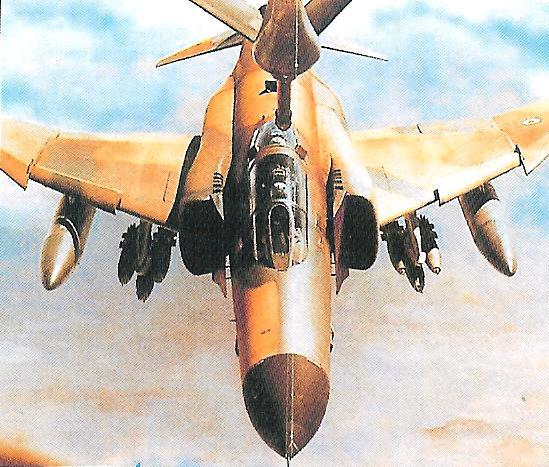
Fill her Up! This F-4 Phantom is being refueled by a Boeing 707 aerial tanker during the Iran-Iraq war. Iranian jets often refueled before going into combat missions inside Iraq. This particular Phantom is equipped with six Mk-82 bombs (equipped with Snakeye retarding fins). These allowed the Phantoms to attack ground targets at low-level and high-speed (Picture Source: Bishop & Cooper, 2003, color picture 5).
The breakdown in military discipline was astonishing. Colonel (Ret.) Manouchehr Shiraghayi, an F-4 Phantom II pilot, stationed at Bushehr Sixth Tactical Air Base (TAB) wrote in his memoirs:
“NCOs [non-commissioned officers] had formed councils to run the base. Some days they ordered NCOs not to wear uniforms.”
As a young first lieutenant, Shiraghayi had to seek permission from these councils to have guests in his residence. No one could have ignored the negative impact on personnel morale. Similarly, Brigadier General (Ret.) Alireza Namaki, then a Captain in the Sixth TAB, recalls that:
“Homafars were often on strike. The day Iraq attacked, I was coming back from a meeting with some of them who had been protesting again.”
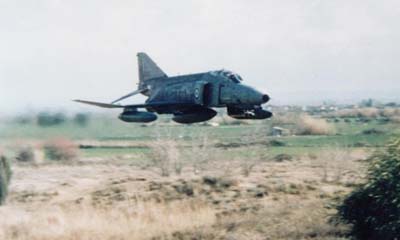
Undated photo of an Iranian Phantom II flying at very low level (Source: Persiangig). Iranian pilots became especially adept with this tactic, often showing up unexpectedly to rivet invading Iraqi columns with their deadly M61 20mm cannon fire.
Despite the organizational collapse of the Iranian military and the departure of American military advisors at the onset of the revolution, the Islamic Republic Iranian Air Force (IRIAF) displayed remarkable performance during the first year of the war. In fact, the IRIAF managed to quickly respond to Iraqi attacks on Iranian air bases on the same day of the Iraqi invasion of Iran. The Third and Sixth TABs launched Operation Revenge within a few hours of the Iraqi attack. Accordingly, eight Iranian F-4 Phantoms from Hamedan and Bushehr attacked two air bases in Iraq. Iran lost one Phantom, marking the first Iranian combat casualties. Brigadier General (Ret.) Rouholdin Aboutalebi, then a junior officer in Shiraz Seventh TAB, remembers:
“I put on my flight suit as I was running in the street, wearing my boots.”
He hailed a colleague and he was airborne in less than six hours for a Combat Air Patrol (CAP) mission. Similarly, General Namaki recalls that:
“When the war started, we all became united in defending our motherland.”
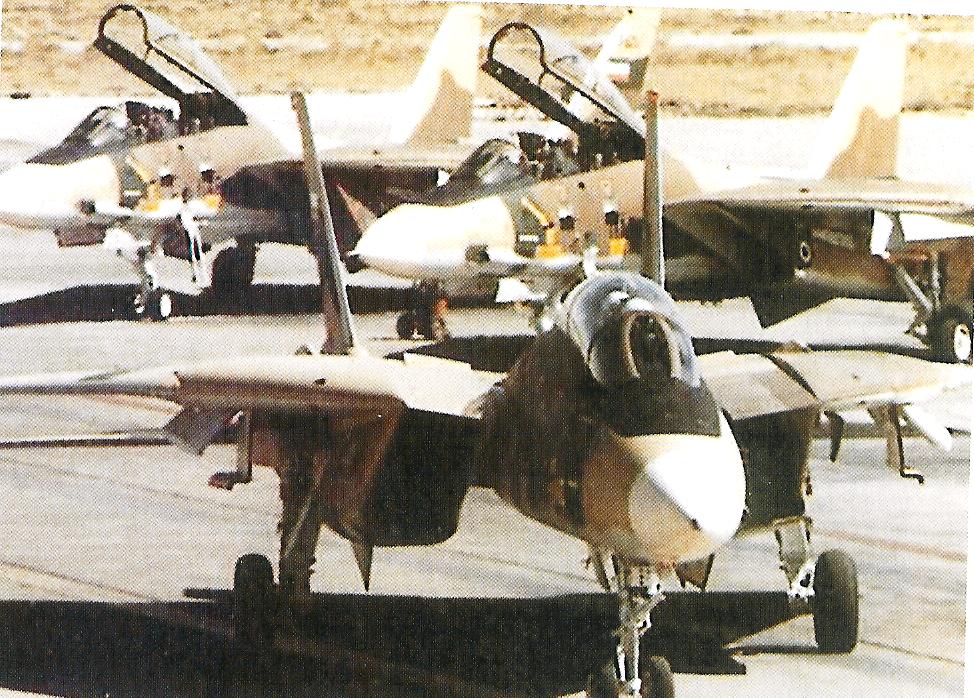
Freshly delivered F-14 Tomcats at the Iranian airbase of Khatami before the revolution (Cooper & Bishop, 2004, Color plate 3). For more see here …
On the second day of the war, the IRIAF launched Operation Kaman 99, one of the biggest airstrikes in military history by deploying 140 fighter bombers to Iraq, targeting oil refineries, air bases, and other strategic installations to:
“… slow down the Iraqi advances inside Iran.”
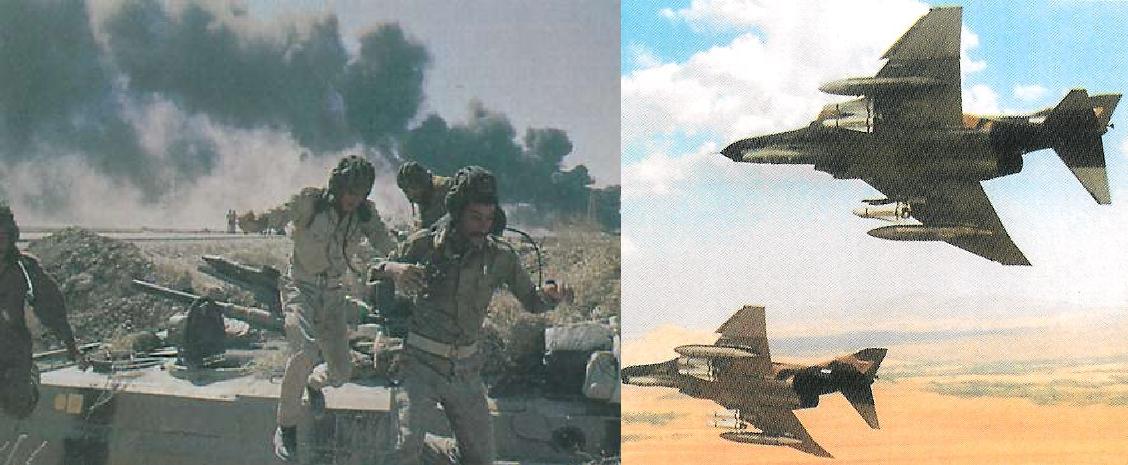
Tayyara! Tayyara! (Arabic: Airplane! Airplane!). Iraqi crew of a BMP armored personnel carrier advancing in Iran in 1980 (at left) abandon their vehicle in haste at the sound of the roaring engines of two US-made Iranian F-4E Phantoms. Iranian Phantoms (at right) were also reported to be flying just meters above ground level to fire their 20mm cannon at Iraqi tanks and armored vehicles (Picture Source at left: www.Acig.org; Picture Source at right: Farzad Bishop, Combat Aircraft 37, reproduced with permission in Iran at War: 1500-1988, 2011).
Brigadier General (Ret.) Fereydoun Samadi, then a major and deputy commander of the Sixth TAB in Bushehr, remembers the briefing that morning:
“Our commander… Lieutenant Colonel Mehdi Dadpay started the meeting by saying, ‘Well gentlemen, we have been wearing these uniforms to serve Iran in such an hour… We have been trained for this moment.’”
Hours of training and discipline imposed during the monarchy under Mohammad Reza Shah Pahlavi were paying off. Aboutalebi, who served as an F-14A Tomcat pilot, recalls:
“More than two hundred airplanes were airborne that day. We wanted to end the war as soon as possible. However, there were not enough ground forces to meet the enemy …”
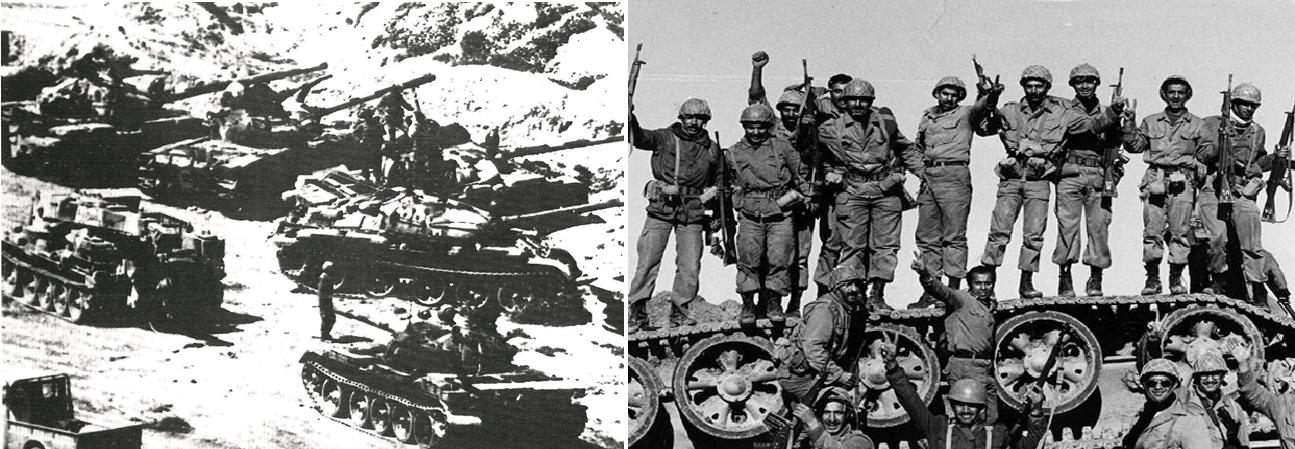
Elements of the Iraqi 12th Armored Division assemble at Fakkeh (in the Dezful area) on March 23rd 1982 to rescue remnants of the Iraqi 4th Army Corps crushed by a powerful Iranian offensive (Photo source: Steven J. Zaloga, Modern Soviet Combat Tanks, Osprey Vanguard 37, p.32). As these units deployed to attack, they were bombed and strafed by up to 95 Iranian F-4 and F-5 combat aircraft. The Iraqi 12th Armored Division was virtually eliminated. The right photo is of Iranian regular army troops atop an overturned Iraqi tank of the 12th armored division (Photo source: www.shahed.isaar.ir). Note that the vehicle has been blown upside down as a result of aerial bombardment by Iranian F-4 and F-5 combat aircraft.
In fact, Iranian Tomcats purchased under the shah, despite massive shortages of spare parts and limited supplies of their expensive long-range AIM-54 Phoenix missile, played a critical role in providing air cover and protecting Iran’s shipping lines and critical infrastructure. Military historians have indicated that by January 1981, Iranian Tomcats had scored thirty-three kills against the Iraqi air force.
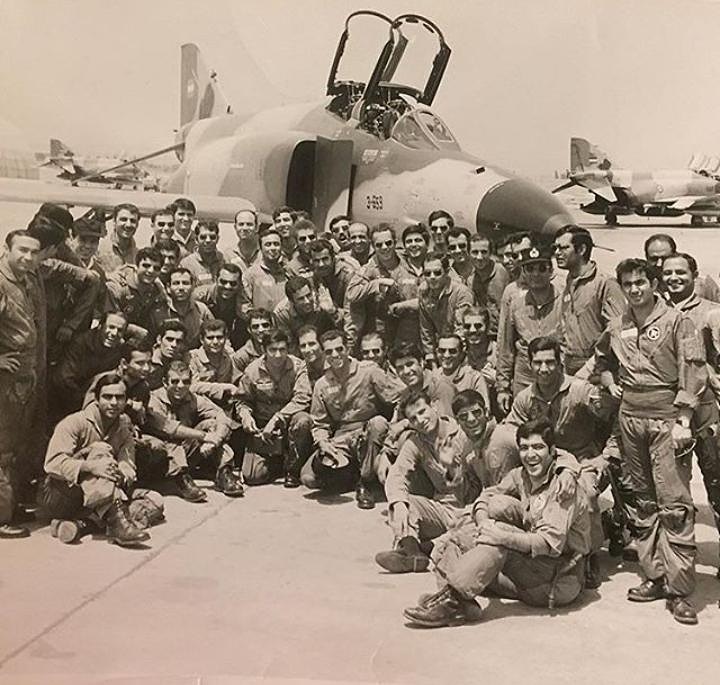
The 12th Fighter Training Squadron in 1st Fighter Tactical Airbase, Mehrabad (Courtesy photo) (Source: Atlantic Council).
While the IRIAF slowed down the Iraqi divisions, Iranian ground forces were slow to mobilize. Instead of permitting volunteers to join the ranks of the Artesh, a new organization, the Basij, was established, which was placed under the IRGC command. After losing most of its senior commanders, many of its officers, and experienced NCOs, the Iranian army was not in any shape to mount offensive operations. Hence, it fought a defensive war. Many of the revolutionaries still comment on the army’s absence, claiming that it was only the IRGC and volunteers who were there to meet Iraqis on the ground. However, the Artesh had deployed all of their available units. Few remember that, in the immediate aftermath of the 1979 revolution, the provisional government had reduced the duration of the draft from twenty-four months to twelve months, cutting the army’s strength even further by sending home many trained soldiers.
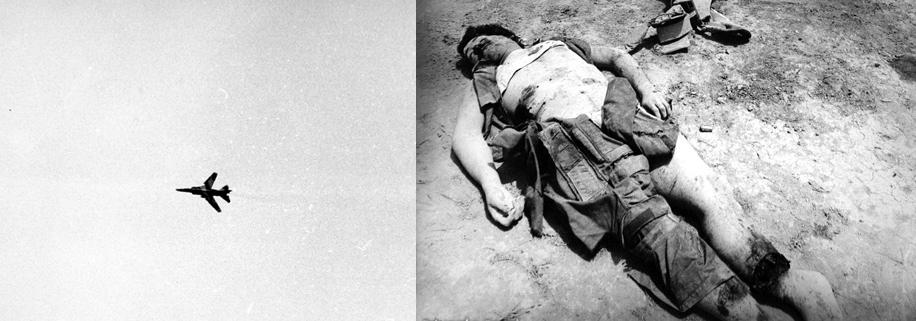
WARNING-GRAPHIC PHOTO – An Iraqi Mig-23 just before it was shot down by Iranian forces (left) and the remains of its unfortunate pilot after the plane crashed (right) (Picture sources: Military Photos Net). Iraqi Mig-23 aircraft suffered heavy losses at the hands of Iranian F-14s – despite much Soviet-East Bloc, French-Western, and some Indian assistance, right up to the last days of the war (Picture Source: AviationLive.org).
Meanwhile, in the early days of the conflict, lack of ground support threatened some IRIAF air bases. In less than eight days, Iraqi divisions manage to encircle the Vahdati Air Base belonging to the fourth TAB in Dezful. Colonel Bahman Forghani, the de-facto commander of the base, called President Abolhassan Banisadr, who was then the commander in chief of Iranian armed forces, requesting assistance. Forghani was told to hold off the enemy for forty-eight hours. He launched all available F-5 Tigers against advancing Iraqi column in Khuzestan province. “Whenever [the] Iraqis established a bridge over Karkheh River, we bomb[ed] it and then strafed their advancing units.” Iranian pilots conducted 378 sorties in one day, losing five F-5 Tigers to enemy fire. Iraqis were never able to cross the River Karkheh. The IRIAF’s vigilance denied Iraq the strategic success it needed to sever the southwestern province from the rest of Iran in order to claim it as an Arab territory, as promised by Saddam- as noted by Colonel (Ret.) Forghani:
“Our pilots stopped the enemy by sacrificing themselves and their aircraft …”
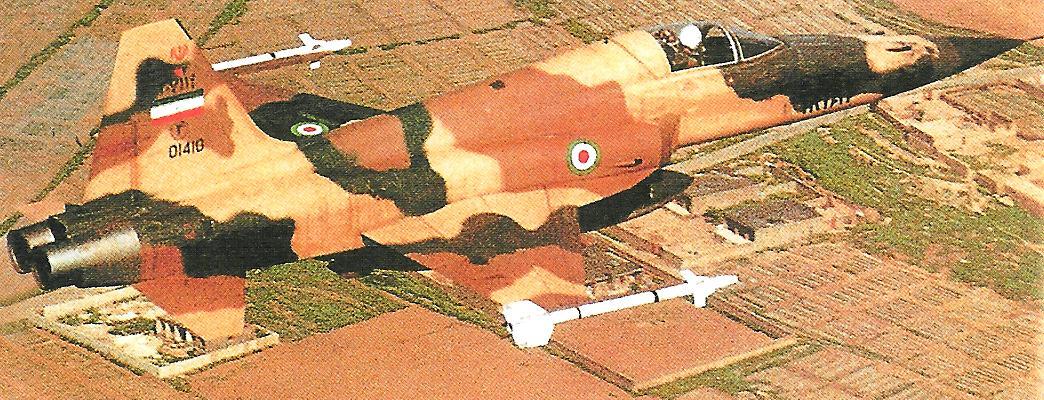
An Iranian F-5 Tiger (Picture source: pp. 31 in “IRIAF: 75th Anniversary review”, World Air Power Journal, Volume 39 Winter 1999 issue, pp.28-37). Research by Cooper and Bishop has revealed that an F-5 fired the finishing rounds at an already damaged (by an F-14) Iraqi MiG-25 during the Iran-Iraq war.
The aircraft and equipment possessed at the onset of the Iran-Iraq war were among the most advanced military technology. Today, the balance is reversed. Iran’s neighbors operate the more advanced aircraft supported by a vast network of advisors and a global supply chain of parts. The IRIAF is using a mix of old American aircraft—all older than forty years—and Soviet made airplanes in addition to a few airworthy French Mirage F-1’s. Some in Iran hope that the IRIAF can acquire some modern aircraft with the expiration of the United Nations-imposed sanctions on arms in October, so that their country can experience another wave of renovation and modernization as it did during the 1960’s and 1970’s.
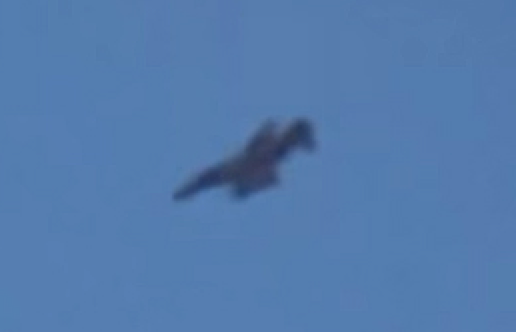
The Old Warhorse in action in late 2014: the venerable Phantom attacking ISIS positions in support of the Kurds; this photo is from a film report by the Al-Jazeera network (Source: Al-Jazeera, December 2, 2014).
As Iran approaches the fortieth anniversary of the Iran-Iraq War, the debate over the role of Artesh has been intensifying. Reviewing facts and events on the ground has highlighted the role of the IRIAF and the Artesh by extension. And, though only a stamp was distributed last year to commemorate Operation Revenge as the first response to the Iraqi aggression, a new documentary on IRIAF operations is about to be released in Iran. The Iranian public is growing increasingly interested in the unofficial version of the war, eager to learn what the American-trained pilots and officers of Artesh did. They believe it is time to fill the gaps in the history of the Iran-Iraq war.

